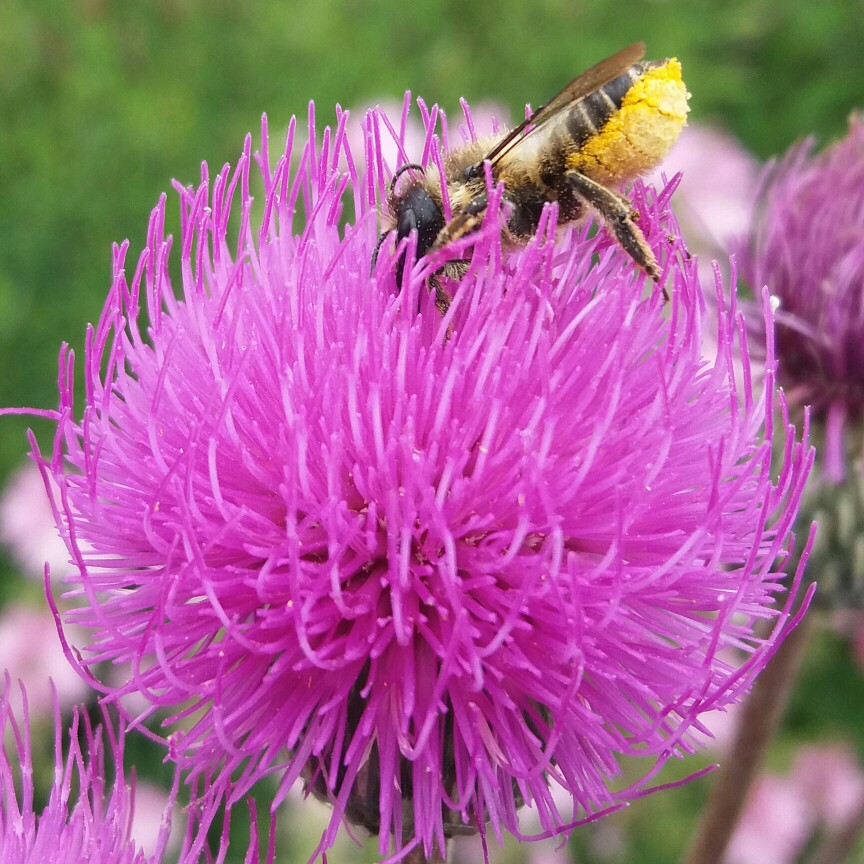
Cirsium heterophyllum
Melancholy Thistle
Melancholy Thistle is similar to the Brook Thistle but it lacks spines. The plant grows 45 to 120 cm tall, and forms creeping runners. The stem is grooved but unwinged, more-or-less branchless, and cottony. The leaves are green and hairless above, thick white-felted underneath. The flowers are red-purple, and appear through mid-summer.
Contributed by @schefflera
-
Full sun
-
Occasional watering
-
Full Frost Hardy: 5F (-15°C)
-
Moist and free draining
Common name
Melancholy Thistle
Latin name
Cirsium heterophyllum
type
Herbaceous Perennials
family
Asteraceae
ph
5.0 - 7.5 Acid - Neutral
Plant & bloom calendar
-
Best time to plant
-
When the plant will bloom
full grown dimensions
 0.60 M
1.20 M
0.60 M
1.20 M
Cirsium heterophyllum
Melancholy Thistle is similar to the Brook Thistle but it lacks spines. The plant grows 45 to 120 cm tall, and forms creeping runners. The stem is grooved but unwinged, more-or-less branchless, and cottony. The leaves are green and hairless above, thick white-felted underneath. The flowers are red-purple, and appear through mid-summer.
Planting
From Early Spring TO Mid Spring
Plant young plants out in spring in full sun and in a well prepared, moist but well drained soil. To prevent spreading, you can restrict spread by planting in a large container which can be sunk into the soil in the growing position.
Flowering
From Early Summer TO Mid Autumn
Flowers appear in early Summer and, if dead-headed, will continue all through Summer to first frosts.
Propagating by division
From Mid Autumn TO Late Autumn
After approximately three years, once herbaceous perennial varieties have become established clumps they should be divided in order to retain vigour, and to propagate the plant. The simplest method is to carefully dig around the clump and gently pull it apart into fist sized pieces and re-plant immediately. The divisions can be re-planted straight into the ground, or, for more reliable establishment, into pots to overwinter before being planted out in the following Spring.











